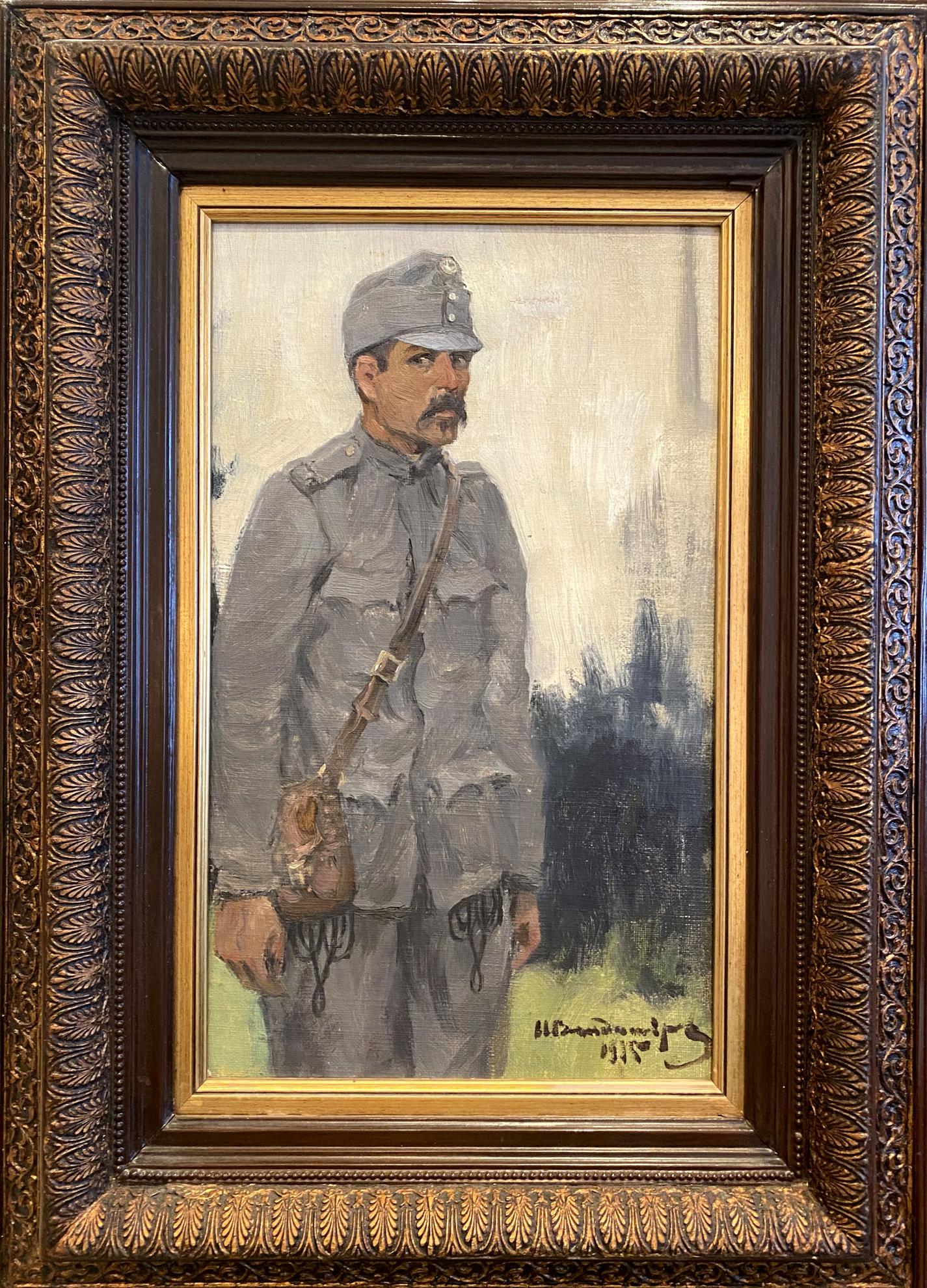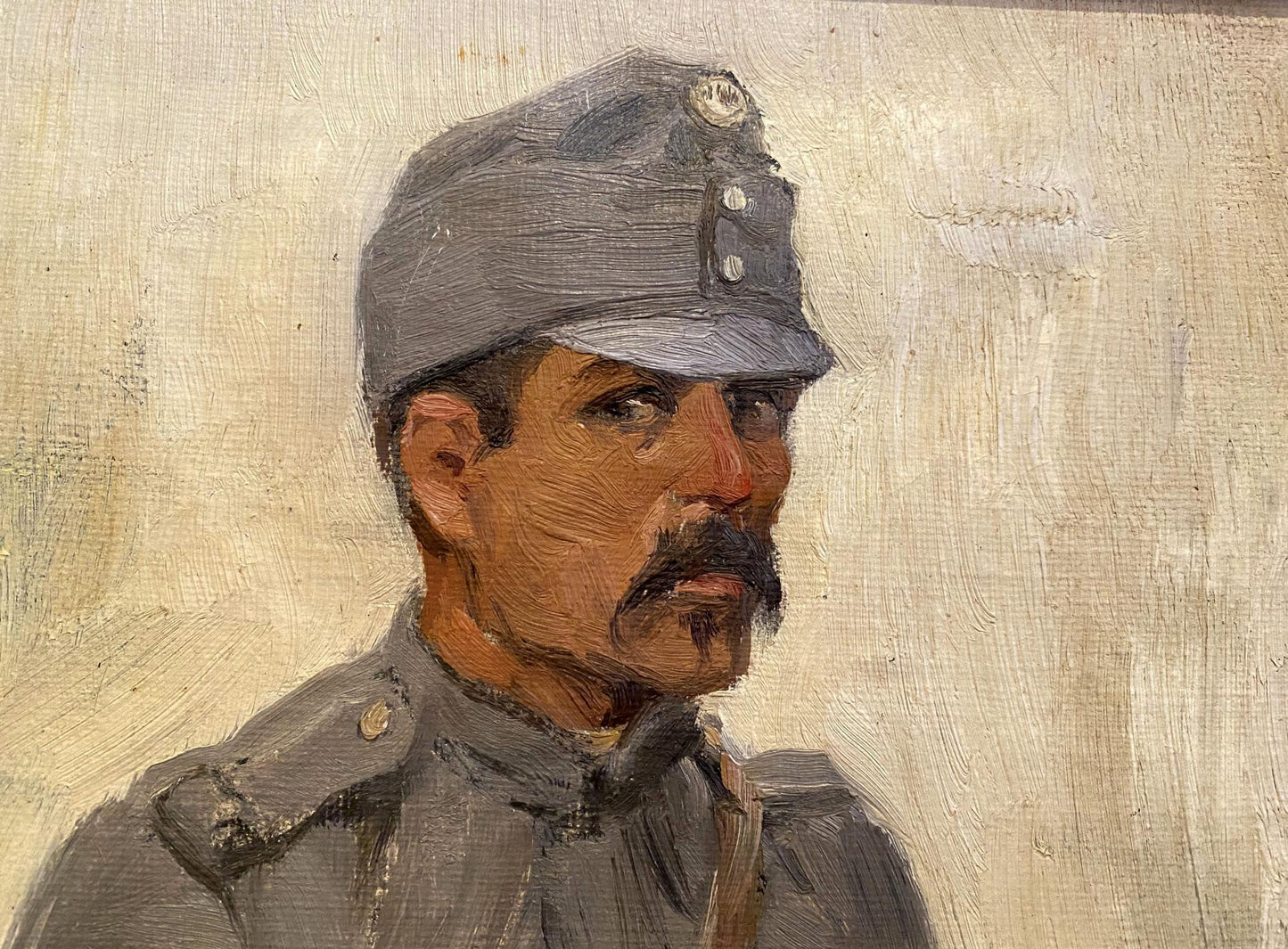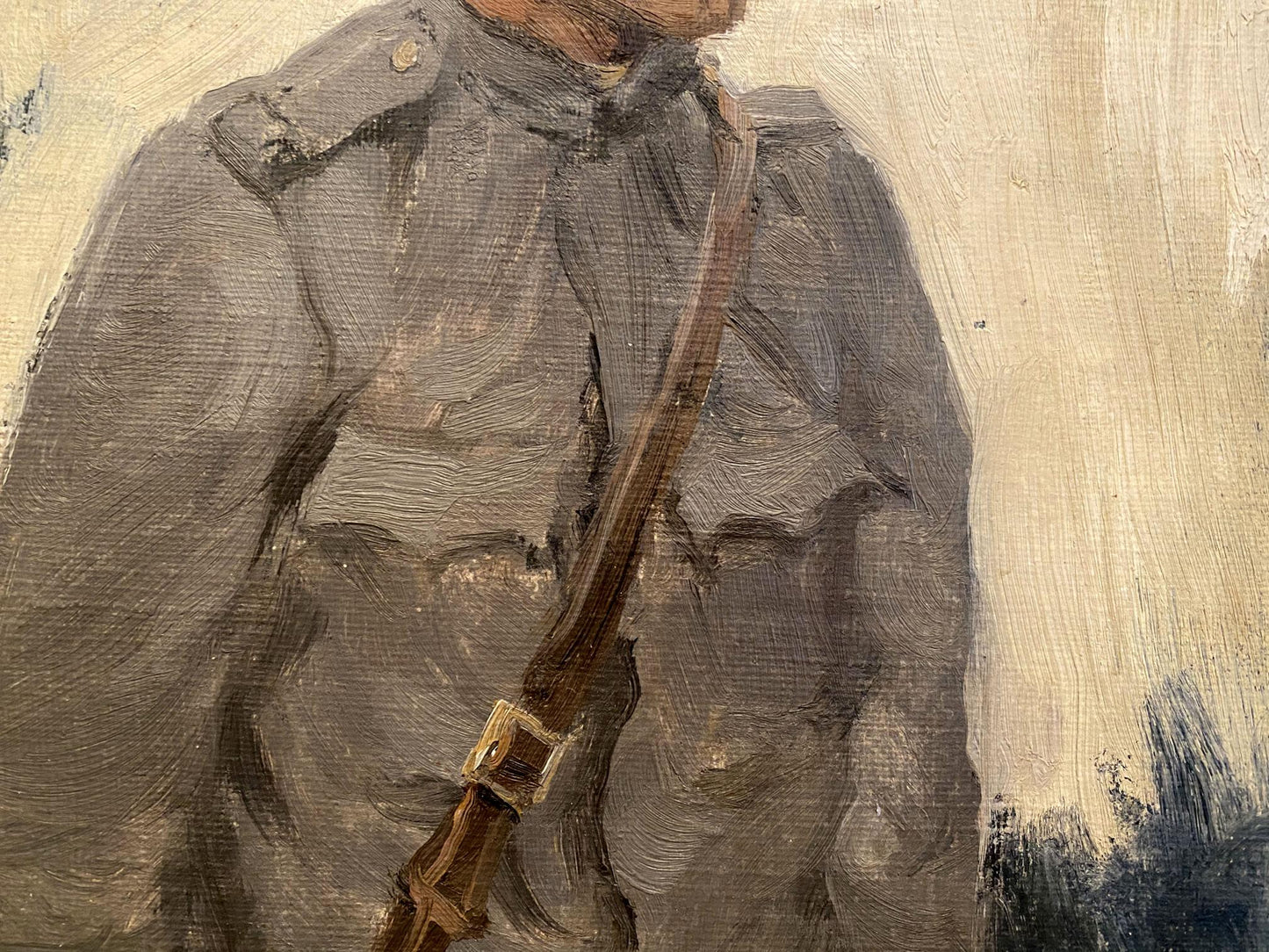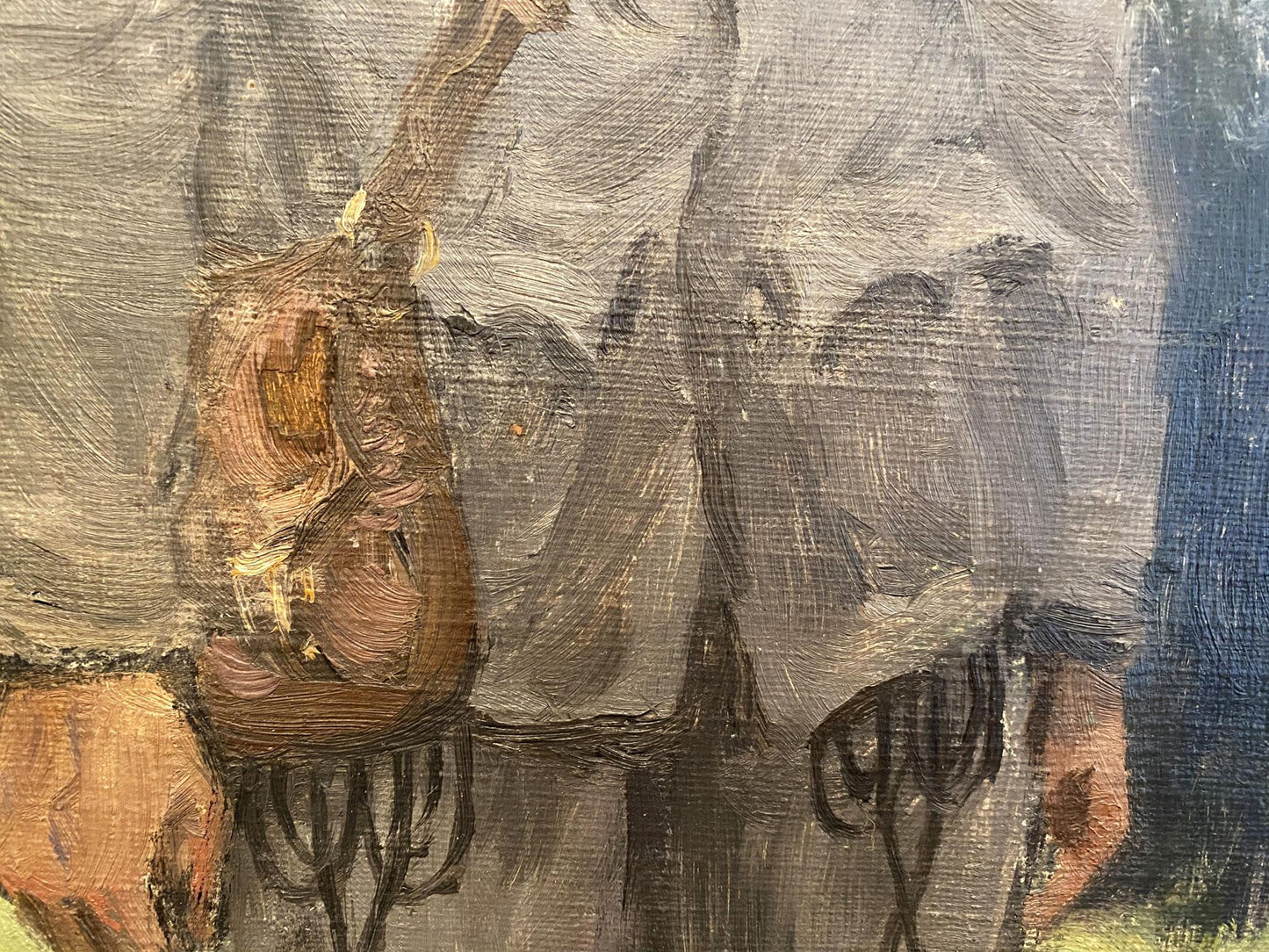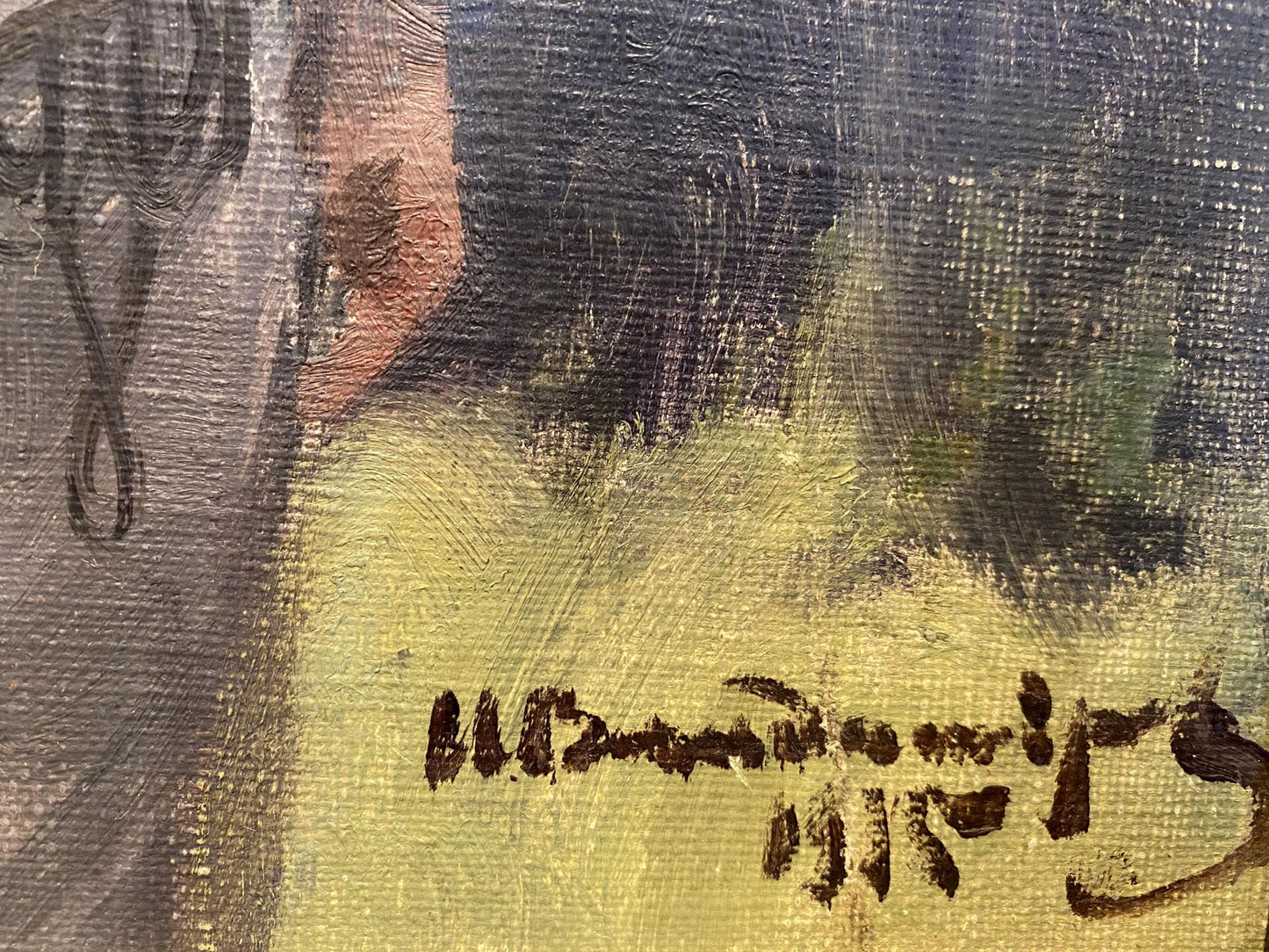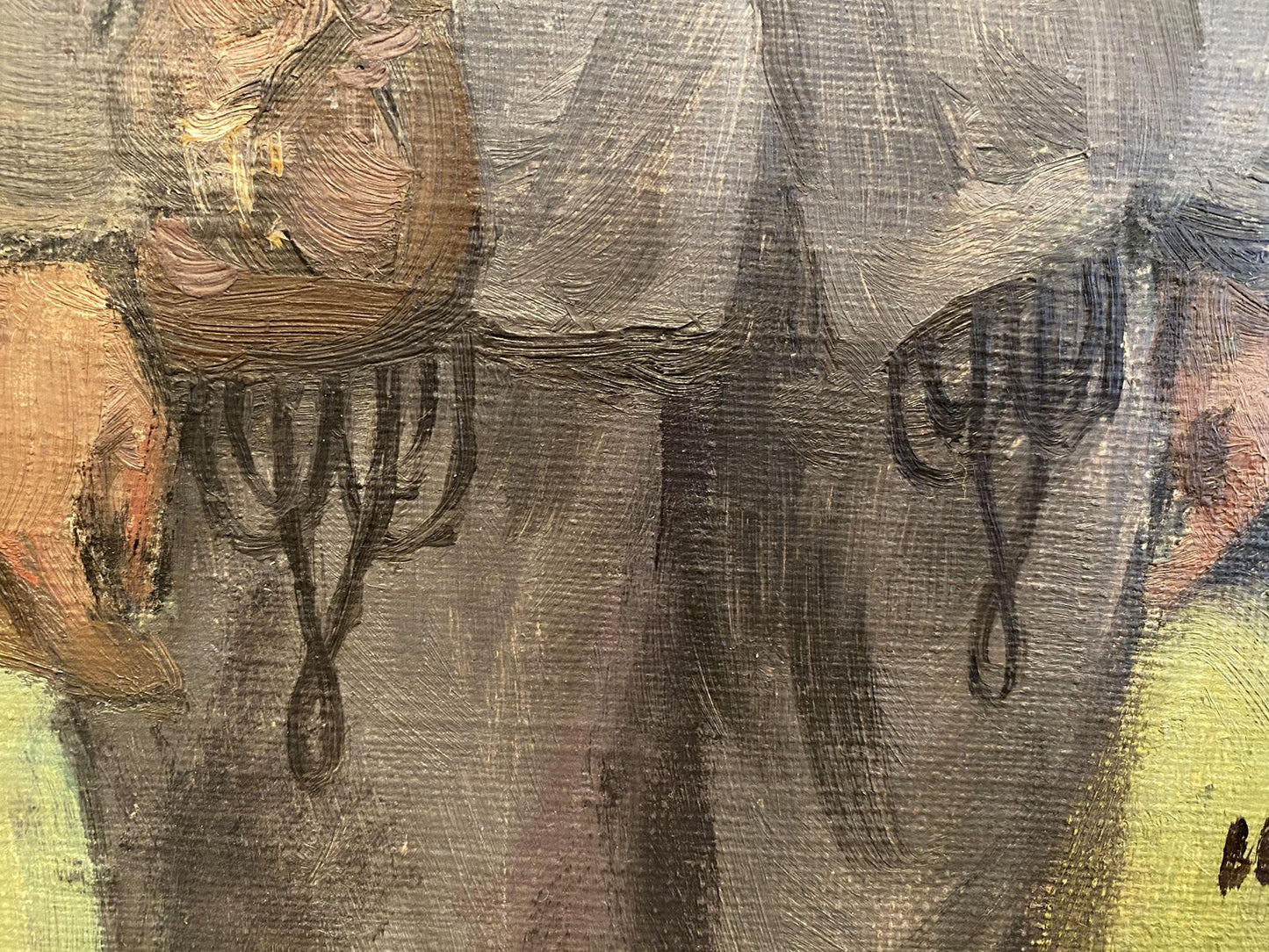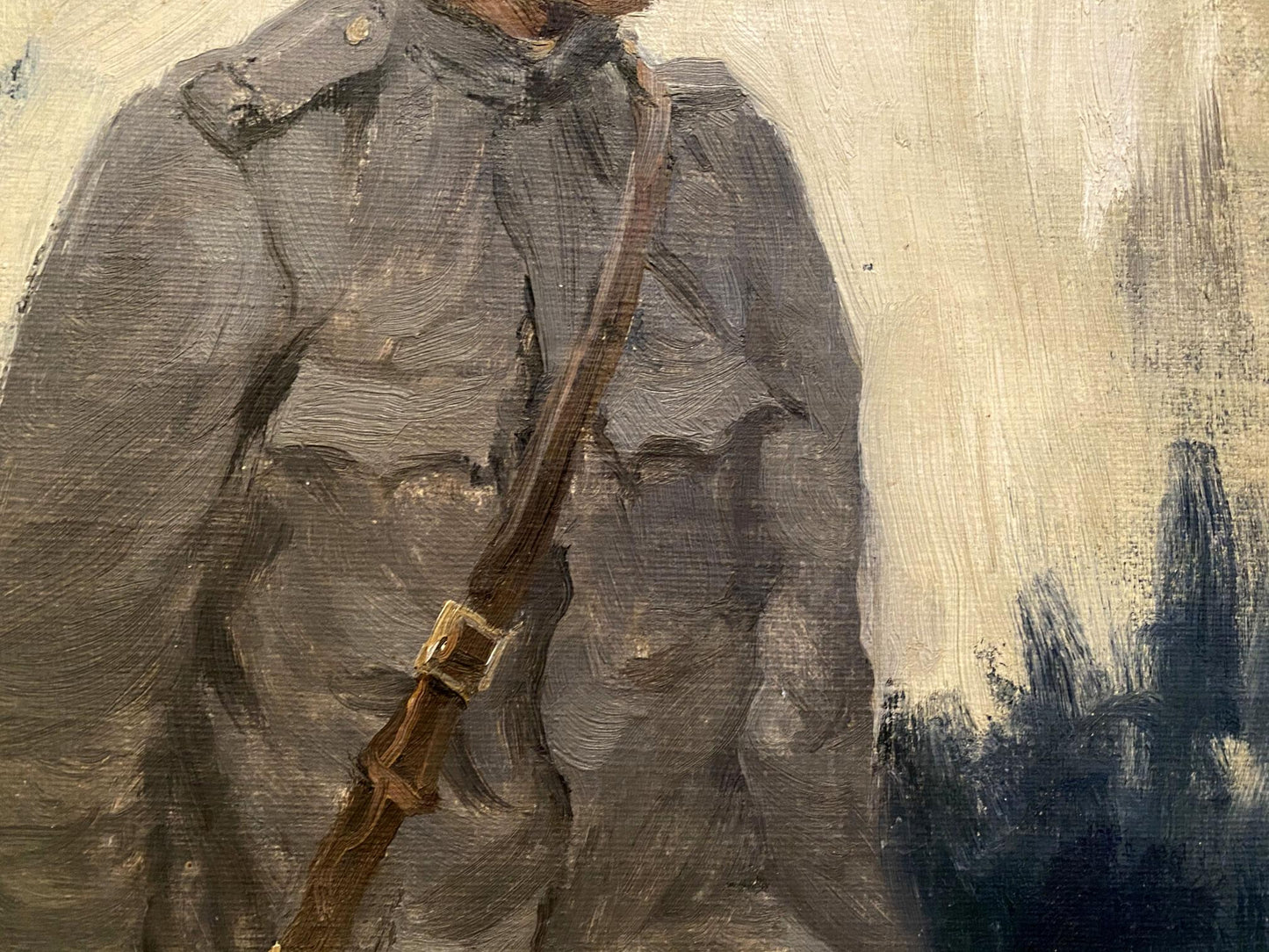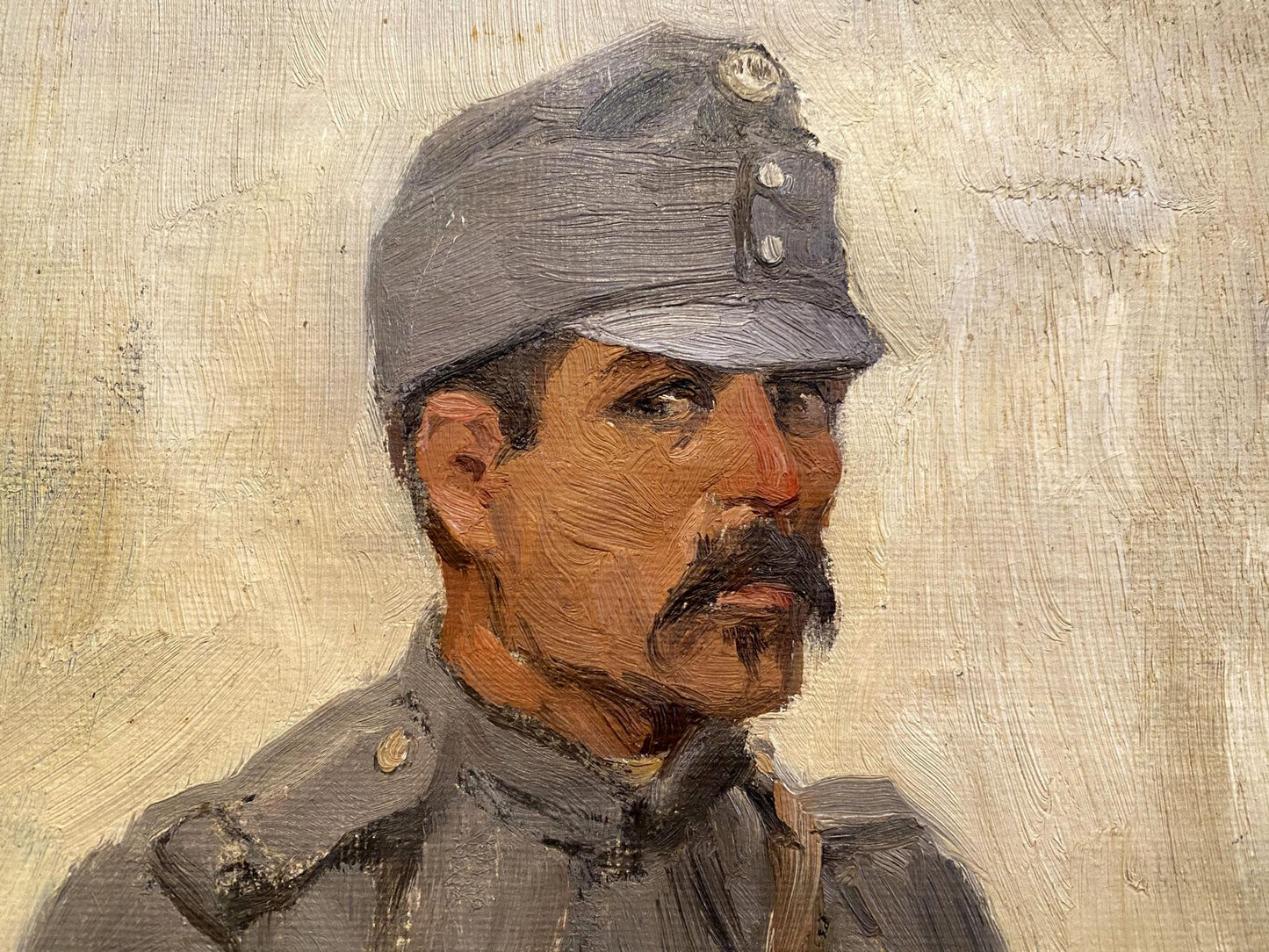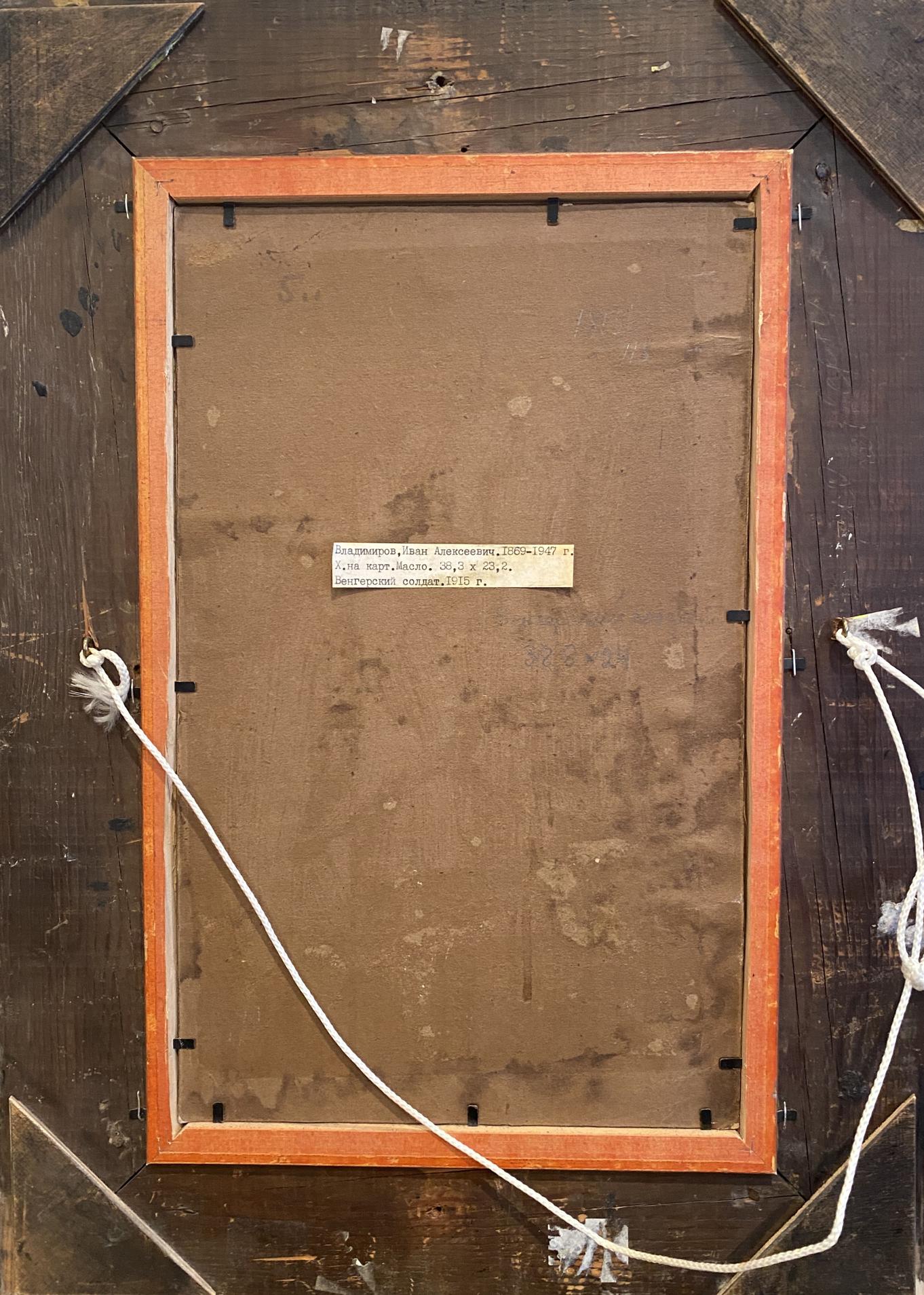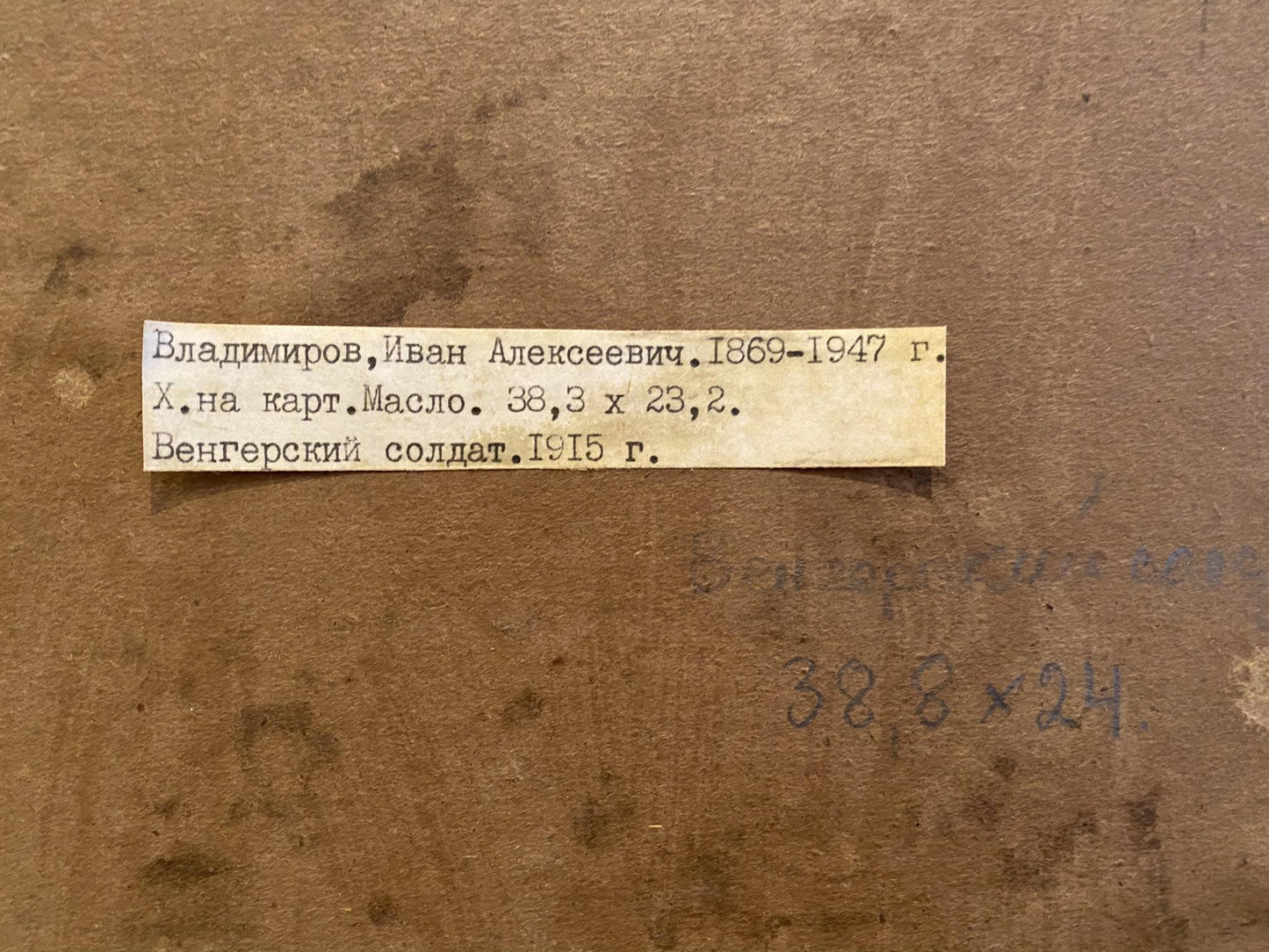1
/
of
10
Oil painting Hungarian soldier Ivan Alekseevich Vladimirov
Oil painting Hungarian soldier Ivan Alekseevich Vladimirov
SKU:Verns1282
Regular price
$1,350.00 USD
Regular price
Sale price
$1,350.00 USD
Taxes included.
№Verns 1282
*** ABOUT THIS PAINTING ***
* TITLE: "Hungarian soldier"
* ARTISTS: Ivan Alekseevich Vladimirov
* SIZE: 38.3x23.2 cm/'15.07x9.13 inches'
* MEDIUM: oil, canvas on cardboard
* HAND PAINTED: Original painting from our collection
* CONDITION: we tried to convey the maximum information with the help of photos about this product
About the artist: Ivan Alekseevich was born on January 10, 1870 in Vilna (present-day Vilnius).
The artist's mother was the famous English watercolorist Elizabeth Wackhorn. Father - a priest, at one time worked as a librarian at the Moscow English Club. As a child, he traveled alone in England and Polesie. Received an art education at the Vilna drawing school of Ivan Trutnev. He studied at the St. Petersburg cadet school, left the service due to illness. In 1891-1893 he studied at the St. Petersburg Academy of Arts, where he specialized with Bogdan Villevalde, Alexei Kivshenko and Franz Roubaud [4].
Every year he spent the summer in the Caucasus in the mountain villages, bringing from there material for paintings that were awarded large and small silver medals: "The capture of the Turkish redoubt", "Dressing station during the Caucasian war." For the painting "Dressing Station during the Caucasian War" in 1893 he received the title of class artist of the second degree, which gave him the opportunity to start independent work. In 1897 he was awarded the title of class artist of the first degree for the painting "The Battle of the Adyghe on the Malka River".
He was an art correspondent for the Niva magazine during the Russian-Japanese (1904-1905), Balkan (1912-1913) and First World Wars. As he wrote, "In all my works of art, the main idea was to express the aspiration of our gallant fighters to repel and destroy the hated, but strong and vicious enemies of the Motherland." Author of series of paintings dedicated to the Russian-Japanese war ("The weapon is in danger", "Artillery battle", "Returned from the war", "In Manchuria", "Reconnaissance in a downpour", "Interrogation of a prisoner", "Reinforced reconnaissance"), revolutionary events of 1905 ("At the Winter Palace", "Fight in Presnya", "On the Barricades in 1905"), life compositions ("In the Wood Warehouse", "Philanthropist", "Grief", "Inventor and Capitalist", "Name Day grandfather "), the First World War, sketches of military operations for the magazine" Niva ", watercolors, photographs. His drawings were published by the London Graphic - the world's first art illustrated magazine, he collaborates with French Illustration and a number of American magazines.
Vladimirov owns copies and sketches of the remains of the 10th-11th century painting of the Sentin temple in the Teberda gorge of Karachay-Cherkessia [5].
In the 1910s he lived with his wife and two daughters at his dacha on Morskaya Street. Now the territory of the former dacha of Vladimirov is part of the governor's dacha of the village of Komarovo.
In 1917-1918, while working in the Petrograd militia, he painted portraits of wanted criminals. He made a large cycle of documentary sketches of the events of 1917-1918 (The Arrest of Tsarist Generals (1918), Petrograd. Spring 1918 (1918), etc.).
During the Soviet-Finnish war, due to his age, he could not go to the front and, according to newspaper reports, created the pictures "Surrender of the White Finns", "Entry of Soviet troops to Vyborg".
During the Great Patriotic War, he was in besieged Leningrad, prepared posters, made sketches and sketches, painted pictures ("Fight for Tikhvin", 1943; "Fight on the streets of Berlin", 1946), kept a diary of the blockade.
He died on December 14, 1947 in Leningrad at the age of 78. Buried at the Serafimovskoye cemetery in St. Petersburg.
*** ABOUT THIS PAINTING ***
* TITLE: "Hungarian soldier"
* ARTISTS: Ivan Alekseevich Vladimirov
* SIZE: 38.3x23.2 cm/'15.07x9.13 inches'
* MEDIUM: oil, canvas on cardboard
* HAND PAINTED: Original painting from our collection
* CONDITION: we tried to convey the maximum information with the help of photos about this product
About the artist: Ivan Alekseevich was born on January 10, 1870 in Vilna (present-day Vilnius).
The artist's mother was the famous English watercolorist Elizabeth Wackhorn. Father - a priest, at one time worked as a librarian at the Moscow English Club. As a child, he traveled alone in England and Polesie. Received an art education at the Vilna drawing school of Ivan Trutnev. He studied at the St. Petersburg cadet school, left the service due to illness. In 1891-1893 he studied at the St. Petersburg Academy of Arts, where he specialized with Bogdan Villevalde, Alexei Kivshenko and Franz Roubaud [4].
Every year he spent the summer in the Caucasus in the mountain villages, bringing from there material for paintings that were awarded large and small silver medals: "The capture of the Turkish redoubt", "Dressing station during the Caucasian war." For the painting "Dressing Station during the Caucasian War" in 1893 he received the title of class artist of the second degree, which gave him the opportunity to start independent work. In 1897 he was awarded the title of class artist of the first degree for the painting "The Battle of the Adyghe on the Malka River".
He was an art correspondent for the Niva magazine during the Russian-Japanese (1904-1905), Balkan (1912-1913) and First World Wars. As he wrote, "In all my works of art, the main idea was to express the aspiration of our gallant fighters to repel and destroy the hated, but strong and vicious enemies of the Motherland." Author of series of paintings dedicated to the Russian-Japanese war ("The weapon is in danger", "Artillery battle", "Returned from the war", "In Manchuria", "Reconnaissance in a downpour", "Interrogation of a prisoner", "Reinforced reconnaissance"), revolutionary events of 1905 ("At the Winter Palace", "Fight in Presnya", "On the Barricades in 1905"), life compositions ("In the Wood Warehouse", "Philanthropist", "Grief", "Inventor and Capitalist", "Name Day grandfather "), the First World War, sketches of military operations for the magazine" Niva ", watercolors, photographs. His drawings were published by the London Graphic - the world's first art illustrated magazine, he collaborates with French Illustration and a number of American magazines.
Vladimirov owns copies and sketches of the remains of the 10th-11th century painting of the Sentin temple in the Teberda gorge of Karachay-Cherkessia [5].
In the 1910s he lived with his wife and two daughters at his dacha on Morskaya Street. Now the territory of the former dacha of Vladimirov is part of the governor's dacha of the village of Komarovo.
In 1917-1918, while working in the Petrograd militia, he painted portraits of wanted criminals. He made a large cycle of documentary sketches of the events of 1917-1918 (The Arrest of Tsarist Generals (1918), Petrograd. Spring 1918 (1918), etc.).
During the Soviet-Finnish war, due to his age, he could not go to the front and, according to newspaper reports, created the pictures "Surrender of the White Finns", "Entry of Soviet troops to Vyborg".
During the Great Patriotic War, he was in besieged Leningrad, prepared posters, made sketches and sketches, painted pictures ("Fight for Tikhvin", 1943; "Fight on the streets of Berlin", 1946), kept a diary of the blockade.
He died on December 14, 1947 in Leningrad at the age of 78. Buried at the Serafimovskoye cemetery in St. Petersburg.
Couldn't load pickup availability
